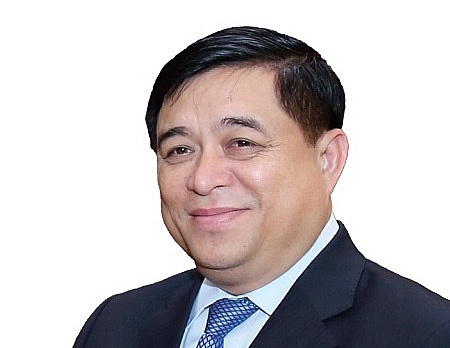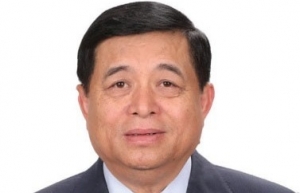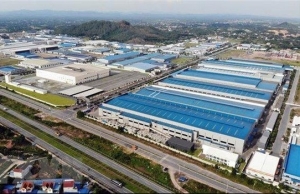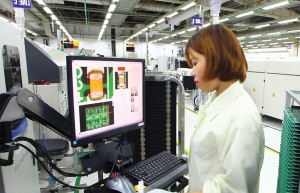Uncertainty must be taken into account in promoting growth
The global purchasing managers’ index decreased from 51.6 in July to 50.6 in August, reflecting a slowing expansion trend of the global economy. Manufacturing activities continued to shrink for the third consecutive month, while service activities continued to expand, reaching 51.1 points in August, down from 52.7 points in July, but this is the lowest movement since January.
 |
| Nguyen Chi Dung - Minister of Planning and Investment |
Energy prices have recovered since July last year, in which global crude oil prices have increased sharply, reaching their highest amount over the last nine months, mainly due to the global economy being more optimistic than expected, and supply reduced.
Meanwhile, food prices are cooling down and the FAO Food Price Index averaged at 121.4 points in August, down 2.1 per cent on-month, and 24 per cent lower than the March 2022 peak.
International organisations have said that global economic growth in 2023 would increase slightly compared to earlier forecasts. The International Monetary Fund (IMF) in August expected that the global economy will grow by 3 per cent this year, 0.2 per cent higher than the forecast in April. The risk of a deep recession is reduced, but challenges are still ahead.
The Organisation for Economic Co-operation and Development (OECD) said that global economic growth could reach 3 per cent, adjusted up 0.3 percentage points compared to the forecast in June. The World Bank raised its forecast for global economic growth in 2023 to 2.1 per cent, from 1.7 per cent given in January. They also emphasised the risk of the world economy entering a period of stagnant growth.
Meanwhile, new standards are gradually taking shape to link global trade and investment with criteria on carbon emission reduction, sustainable development, labour, and governance.
The US economy continues to maintain growth momentum and core inflation has dropped. China’s economic recovery is more stable, with manufacturing recovering and retail sales rising, thanks to measures of loosening monetary policy and reducing down payment requirements for mortgages.
Japan’s economic growth is lower than forecast, core inflation decreased, private consumption is down, and goods exports to China have reduced over many consecutive months. The EU economy has stagnated as monetary policy continued to tighten, the inflation rate decreased, production narrowed, production and exports decreased, and interest rates rose 10 consecutive times.
International organisations maintain positive prospects for Vietnam’s economic growth. The OECD forecasts to grow at 4.9 per cent, down 1.5 percentage points compared to the forecast in March. The World Bank thinks it will reach 4.7 per cent in 2023. The IMF lowered Vietnam’s GDP growth forecast from 5.8 per cent (in April) to 4.7 per cent.
HSBC assesses that Vietnam’s short-term foreign direct investment and trade prospects will recover well and the economy will recover quickly in the near future, reaching 5.8 per cent in 2023. Goldman Sachs believes that global overseas funding flows are leaving China, and Vietnam can increase its position in the global supply chains. Fitch Ratings sees that the credit and liquidity risks of the Vietnamese real estate market have overcome the bottom.
In the coming time, Vietnam has many prospects for improving its growth rate through promoting public investment, consumption, and tourism; increasing the contribution of digitalisation and high technology to GDP growth; promoting the green transition process; and taking advantage of the trend of shifting foreign investment flows.
However, the economy still faces uncertainties such as slow recovery of major trading partners; global inflation pressure slowing down but remaining high; the trend of tightening monetary in many countries to curb inflation; risks of disruption in the global value chains; and concerns over energy security, food security, natural disasters, epidemics, and climate change.
Based on the results of the first nine months, and the fluctuation of major economies around the world, there are three scenarios for growth ahead. The first is economic growth for the whole year of about 5 per cent, meaning Q4 needs to increase by 7 per cent. Scenario two sees economic growth for the whole year of about 5.5 per cent, meaning the fourth quarter should increase by 8.8 per cent. The last scenario puts 2023 economic growth at about 6 per cent, with a Q4 growth necessity of 10.6 per cent.
Growth in the fourth quarter depends heavily on the recovery speed of industrial production, especially the processing and manufacturing industry, the increase in demand in Vietnam’s key export markets, and tourism and domestic consumption activities.
The proposed scenarios are all very challenging and require initiative, effort, and high determination at all levels to deploy solutions for strong growth. They must promote the effectiveness of all resources and utilise opportunities from both outside and inside the economy to achieve the highest growth possible, and therefore create momentum for 2024 and beyond.
 | MPI to submit post-pandemic economic recovery scheme in October In October, the Ministry of Planning and Investment (MPI) will submit to the Government an economic recovery plan, which defines the years of 2022 to 2023 as the time for the country’s recovery, according to MPI Minister Nguyen Chi Dung |
 | Encouraging green growth strategies for Vietnam’s industries The transition to net zero and a green economy would yield great rewards in climate and sustainability terms. Nguyen Chi Dung, Vietnam’s Minister of Planning and Investment, explains how relevant local authorities can work collaboratively to turn the National Green Growth Strategy into action. |
 | MPI pondering overhaul of vital economic zones to drive growth The role of Vietnam’s key economic regions is being reconsidered in an attempt to drive localities further and utilise new advantages. |
 | MPI satisfied with productive NYC talks Vietnam and the United States are strengthening cooperation in high technologies and developing international financial centres. |
What the stars mean:
★ Poor ★ ★ Promising ★★★ Good ★★★★ Very good ★★★★★ Exceptional
Related Contents
Latest News
More News
- Global partnerships key to Vietnam’s IFC development (December 26, 2025 | 16:18)
- Vingroup pulls out of bid to invest in North-South high-speed railway (December 26, 2025 | 11:42)
- Strengthening supply chains through trade promotions and customs reform (December 24, 2025 | 14:00)
- PM orders investment model for North–South high-speed rail (December 22, 2025 | 17:43)
- LS Eco Energy to invest in Vietnam rare earth sector (December 22, 2025 | 17:31)
- Government moves to establish International Financial Centre (December 21, 2025 | 21:00)
- Vietnam's IFC to target global investment flows (December 21, 2025 | 18:00)
- Two national hospitals expand capacity with new facilities (December 20, 2025 | 09:00)
- Ha Tinh breaks ground on major Vingroup industrial and energy projects (December 19, 2025 | 18:24)
- EVN launches major power infrastructure projects nationwide (December 19, 2025 | 18:17)

 Tag:
Tag:





















 Mobile Version
Mobile Version